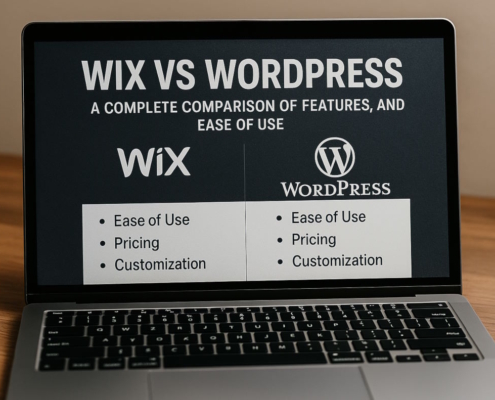What is a business plan?
A business plan is a written record that talks about what your company does, who your customers are, and how your business makes money. On an internal level, producing a business plan can help you in your operations and refine your vision. On an external level, you can provide your business plan to potential investors and lenders as proof that you are on the right path forward.
A business plan is not a permanent thing period that is, it is expected that they will change with time period a start up will change its business plan continuously as it determines who its customers are and what services and products it offers. Older companies may revise their business plan every couple of years by contrast. Prior to applying for a business loan, you should take a look at your business plan, no matter how old your company is.
The first part: the executive summary
An executive summary functions as a kind of elevator pitch. It involves a mission statement, a short explanation of the services or products that your company offers, as well as a bird’s eye view of your plans for financial growth. Your investors will peruse the executive summary first, but ironically, it may be easier to write last. When you write it last, you can emphasize certain information you have talked about in later sections in more detail.
The second part: description of company
Next, you should talk a little about your company. Your description should include basic details like the registered name of your business, the location of your company, and the identities of important individuals in the company. You should be sure to talk about technical expertise or unique skills that members of your team possess. The description of your company should also go into the structure of your business. Identify it as either a partnership, corporation, sole proprietorship, etcetera. You should also include the ownership percentage that each owner possesses, as well as to what extent each owner is involved in the business.
Finally, you should talk a little about your company’s history and the type of business you are running. This functions as a transition into the next section, where you will talk about your objectives.
The third part: statement of company goals
The next part of your business plan should contain a goal statement. That is, you should discuss what you hope to accomplish with your business, both in the short and long term. If you hope to secure an outside investment or business loan, this section should explain how the funding will help you grow your business and achieve your growth goals.
The point of this section is to clearly explain how your business is a good opportunity for a lender. Let’s say that your company is planning to introduce a second line of products. You could talk about how the funding will help your business introduce the new product and how you think, as a result, sales will increase during the next few years.
The fourth part: description of services and products
This section requires you to talk in detail about the services or products that you offer. In it, you should provide a description of your service or product, the pricing model, the kind of customers you have, and your order fulfillment and supply chain strategy. It is also the appropriate time to talk about pending or current patents and trademarks that you may have for your services or products.
The fifth part: market research
Investors and lenders are interested in learning what makes your product or service different from those of competitors. You can talk about who your competitors are in this market analysis portion. You should talk about what the competitors do well, as well as what you do better. This is the place to talk about if you are catering to an underserved or different market.
The sixth part: sales and marketing plan
In this part, you can talk about how you intend to convince consumers to purchase your services or products. You can also discuss how you will breed consumer loyalty, which will result in repeat customers. You should include information about your distribution and sales tactics, which includes the expenses associated with product sales.
The seventh part: business financial analysis
If your business is a startup, there may not be much data concerning business finances. But if you have an older business, you need to include profit and loss statements, a cash flow statement, and a balance sheet that indicates your debts and assets. You may be able to create such reports with the help of accounting software.
This kind of software can also generate metrics like net profit margin, which is the revenue percentage that you maintain as net income. There is also the current ratio, which is the value of your liquidity and capability of paying debts. Also, consider the accounts receivable turnover ratio, which measures how often you collect on receivables every year.
This section is a good point to supply charts and graphs, which will make it easier for readers to understand how your company is performing financially.
The eighth part: financial projections
This section of the business plan is essential if your company requires investors or financing. It goes over the way in which your company will generate enough money to pay back the loan or, otherwise, how you will get a good return for your investors.
This is where you will supply your company’s quarterly or monthly sales and profit and expenses estimates covering a period of three years. You should also include future values that reflect the new financing.
It is important to be as accurate as possible, so go over your previous financial statements carefully before offering projections. It is OK for your goals to be aggressive, but they also need to be realistic.
The ninth part: summary of company operations
Before you finish your business plan, you will need to talk about how your company is structured as well as go over the responsibilities of each team. Such a discussion will help your audience better understand who does each of the jobs you’ve talked about in previous sections. It will also go over the cost of each of those jobs. This is a good place to talk about any exceptional skills that your employees may have, so you can include their CVs to better illustrate the competitive advantage they offer.
The tenth part: appendix
The last section is a good place to attach any additional materials or supporting information that could not be included elsewhere. This might include patents, permits and licenses, contracts, equipment licenses, business and personal credit history, and bank statements. Should your appendix be too long, it may be wise to add a table of contents at the opening of this part.
Business plan writing tips
Be realistic: If your business requires a professional investment or business loan, then your audience will be closely examining your business plan. It is therefore important to provide reasonable estimates of sales. Over-optimism will not work in your favor.
Proofread: Punctuation, spelling, and grammar errors will leap off the page and turn off prospective investors and lenders. It is OK if you are not a natural writer or editor, but you should hire a professional who can write, proofread, or copy-edit your business plan.
Free resources: You can consult the nonprofit association SCORE, which offers a vast network of business experts and mentors who can help you create your business plan. The Small Business Administration also offers free business consulting and can help with creating a business plan.
Why does a startup need a business plan?
The point of a business plan is to help you, the owner of a start-up, figure out where you want to take your business and how you will achieve your goals. A business plan can set you on the right path and create a successful strategy. Jumping in headfirst without a plan can lead you down some unexpected detours. While this may be the more interesting route, you are less likely to stay within budget and grow quickly.
It can definitely be tempting to skip the business plan step and get started. However, this would be a big mistake. Sure, your business could survive without a plan, but you will lack an important sense of control and miss out on critical opportunities for growth.
- Turns an idea into reality
Writing down your business idea can make it seem more real. The act of documenting the concept turns a rough draft into a viable company. The Harvard Business Review reports that start entrepreneurs who create business plans are 16% more likely to create a viable business than those who do not.
It does not even have to be a formal business plan. Even jotting down notes about your potential company will make your startup more likely to become a reality. Without any sort of plan, you are unable to prove your concept to partners, investors, mentors, and even yourself.
- Reduce risk
Creating a startup involves inherent risks. By creating a business plan, you are mitigating some of those risks. The process of writing a business plan forces you to consider every element of your startup to see if it can really work.
Think about whether your solution meets market demand and whether your operational and startup costs are manageable. Will your business model lead to sales? What kind of milestones do you need to reach to attain profitability? These startup questions can be answered using a business plan. If you are already running a startup, creating a plan can help you negotiate risk better. For example, whether you should hire a new employee, what your cash flow will be next month or even next year, whether you will reach your goals, or whether you will need to refocus.
It is important to keep your plan current and review it at regular intervals.
- Test the concept and prove viability
Once you have a concept for a business, you should consider every detail. By writing a business plan, you are forced to think about your budget, your target market, the money you will require to launch the business, and how your concept will become a functional company. You can also share your business plan with others to get feedback and input prior to spending money. It is not even necessary to get into the nitty gritty with your business plan. Rather, it may be best to start out with a simple one-page document to test whether you have a legitimate idea.
- Create a marketing plan
You may have a great idea for a business, but you will need customers. That means you need to identify your target market and how you will reach them. For this reason, you need a marketing plan. This is an important tool that allows you to figure out how to attract your first customers and keep them coming. Your marketing plan can be as simple as a list of possible advertising channels. You can always expand it as needed.
- Create a budget and financial forecast
You need a business plan to let you know the quantity of money needed to begin and run the startup. Of course, you will need cash for your first purchases, but you also need money to keep your business afloat in its early days. When you create your business plan, you will have to establish your budget for expenses, create goals for sales, and figure out how much money you need to keep the business running, buy inventory, and more.
In terms of creating a financial forecast, you don’t have to worry about getting exact numbers. You can start with basic assumptions and benchmark them against the competition to create a baseline for your startup. Over time, as you gather data on your finances, you can update your business plan with more accurate forecasts.
- Get investors and funding
If you want to attract investors to your startup, you will need to present them with a business plan. It could be that they never ask to see the entire plan, though they will ask specific questions that only a well-thought-out business plan can answer. At a minimum, they will ask to see the financial forecasts. When it is time to pitch your startup to investors, having a sound business plan makes it simpler to convey the appropriate information. It is easier to impress potential investors when you have all the correct information ready to go.
- Prepare for different situations
Rarely do things go entirely to plan. Society changes, the tastes of consumers change, and new competition arises. A business plan lets you play with different situations to study how changes to the start-up will affect your budgets, forecasts, cash flow, and profitability. If you do not have a business plan, you will have no choice but to react to changes blindly with no idea of the outcome.
- Find employees
It can be hard to attract workers, especially if you are running a new startup company. Why would a person want to risk working for you when you do not have a track record? This is where a business plan can help. By reading a business plan, workers will better understand your growth plans and business strategy. This will help them feel confident about becoming a member of your team. It can also be helpful in figuring out when to hire more workers and if it is feasible to do so.
- Get everyone on the same page
For your business strategy to be successful, everyone on your team needs to understand it. A business plan allows you to document your strategy, and it is much simpler to get everyone working towards the same objectives. It is a good idea to go over the business plan on a regular basis with your team members. Make sure everyone looks at the core strategy and analyzes how it affects both team goals and individuals.
- Manage the company better
The point of a business plan is to create targets for your company, which include both milestones and financial goals that you hope to achieve. A business plan can help you manage your startup, allowing you to see what aspects of your strategy are successful and which require fine-tuning. For instance, let’s say you have spent money on particular marketing efforts to advertise one of your products.
However, the investment is not working as it should. By looking at your business plan, you will notice what aspects are working and which need adjustment. This allows you to pivot to new opportunities that will improve profitability. It is therefore important that you review your business plan every month, ideally.
- Manage a crisis
While a business plan is helpful in creating a path forward for your business, it can also help you navigate unplanned crises. There may be supply shortages, massive economic downturns, cash flow problems, payment delays, and many other issues. But with the help of your business plan, you will be able to manage each problem confidently.
The plan, you will be able to analyze your present situation, figure out how the problem will change your plan, and decide what is needed to recover. You can even use this same process to prepare your startup for future problems. The proper business plan can make crisis planning less stressful and even make your business recession-proof.
- Be prepared to sell
if your startup turns into a successful business, you may decide to sell the company at some point in the future. With a solid business plan in your pocket, you can argue for a higher valuation. Put yourself in the shoes of the buyer. By looking at your business plan, they will better understand your target market, your business model, and the general potential to scale and grow. It will be easier for a buyer to pull the trigger if they see a professional and organized business plan.
- Use a generator
If you are not a natural writer, creating a business plan may seem onerous. However, drafting a business plan is not as difficult as it may seem. In fact, you can write a basic business plan in as little as half an hour. You can also take advantage of AI business plan generators, which are a great way of getting you started. That said, you don’t want to rely on AI to craft the entirety of your plan. Make sure you are the brains behind the operation. After you have a draft, you can edit the plan until you are satisfied with its presentation. Begin with the basics and then add detail from there.
- Enjoy peace of mind
you can be sure to sleep better at night knowing that you have a solid business plan for your startup. It means that you have spent the time trying to find the appropriate business model and have considered various financial situations that may pop up. Your competitors may not have such a good management tool to run their businesses.
- Backed up by research
According to the Journal of Management Studies, startups that have a business plan enjoy 30% faster growth than companies without one. There are certainly no downside to having a business plan behind your startup.
Conclusion
You now have a good idea of how to create a basic business plan. As we have discussed, there are many reasons to write one, all of which relate to how successful your startup becomes. It is well worth the effort to draft one, whether you only have the seed of an idea or an existing business that you want to take to the next level.






























